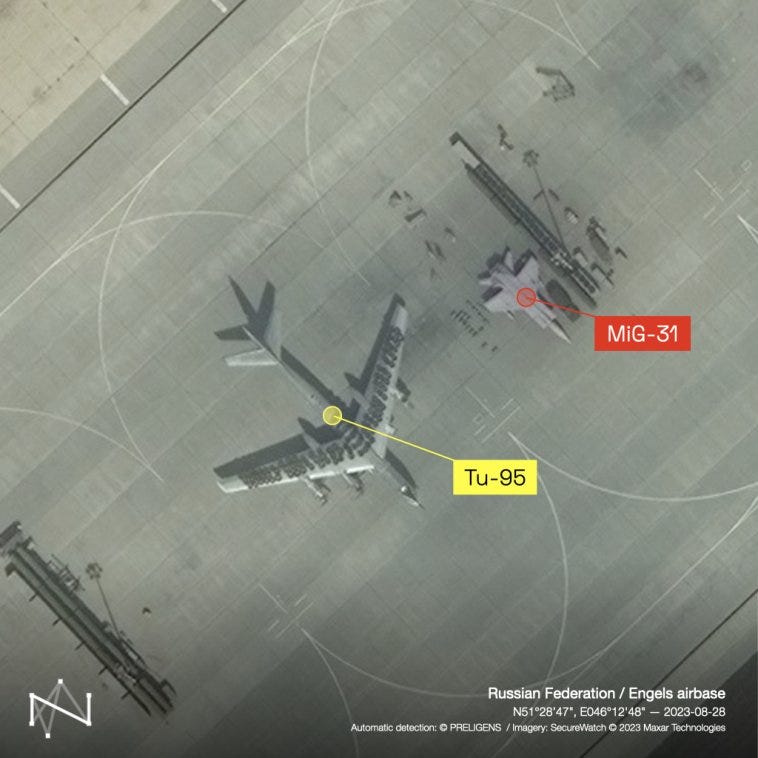AI’s Role in Real-Time Defense Intelligence: Preligence and SATIM Solutions
AI applications in aerospace and defense are not somewhere in the distant future — they are already a reality today. The numbers show a significant investor interest in this area.
AI applications in aerospace and defense are not somewhere in the distant future — they are already a reality today. The numbers show a significant investor interest in this area.
And it’s not about some fancy robots, but rather about so-called geospatial intelligence (so-called “GEOINT”), the analysis of Earth observation data to identify objects and activities in the air, land, maritime, and space domains.
With the massive amount of data generated by various satellite constellations and the urgent demand for unique intelligence capabilities, it’s indeed quite an intriguing space to operate in.
According to Space Capital, an early-stage venture capital firm that invests exclusively in space-based technologies, recent advancements in AI are enhancing the capabilities of companies operating in GEOINT sector.
GEOINT applications have shown more resilience in 2023 investment as the fourth highest year. Also, the number of GEOINT investment rounds has seen an upward trend, with 2023 setting a record and positioning GEOINT as the second most active sector for two consecutive years. Majority of the GEOINT investment rounds are early stage, suggesting its nascency and potential for future growth.
We are actively investing in entrepreneurs who harness spatial data and cutting-edge technologies to revolutionize global industries. — Space Investment Quarterly, Q4 2023
While there are growing number of startups operating in this sector, as an example, I can name two standout European companies specializing in data analytics for the defense sector: Preligence from France and SATIM from Poland.
While neither of these companies operates its own satellites, they leverage advanced AI algorithms to process satellite data for intelligence and situational awareness purposes.
Preligens
Preligens, a Paris-based company founded in 2016, offers solutions that automate the processing of satellite images used by intelligence analysts, all through the power of AI algorithms. It has established itself as a long-term supplier to the French Ministry of Defense, along with other similar customers in several other countries.
Notably, the company is also integrating video footage collected by drones into its algorithms, enabling it to utilize a diverse array of data sources — a capability that proves exceptionally valuable.
“It has been primarily designed for site monitoring and has an alerting system that can be set up for the customer for pattern-of-life analysis to cue analysts towards key signals that can identify aircraft, vessels, vehicles, surface-to-air missiles and more,” Coralie Trigano, the company’s senior sales executive for the Asian-Pacific region, told Defense News at the Singapore Airshow.
Below you can see the actual use cases of Preligens’ capabilities — identifying exact aircraft models, civilian/armored vehicles, vessels across the globe (China, Mali, Russia, Syria) and various environmental conditions.
It is reported that the company may be acquired by French military giants Thales or Safran. This wouldn’t come as a surprise, considering it could be a highly beneficial strategic addition to their existing product portfolios. However, earlier this year rumors were circulating that Preligens to be acquired by undisclosed US company for 300–350 million Euros.
SATIM
SATIM is a Poland-based startup that focuses on software aimed at automatic object detection capabilities using satellite SAR (synthetic aperture radar) imagery. It uses images from special satellites scanning Earth with radio waves, recently secured $2 million of funding.
The company is using SAR-images from satellite constellations operated by Airbus, ICEYE, Umbra Space, Capella Space and several other companies.
The major advantage of this SAR technology that you can detect objects irrespective of the weather — clouds, rain, snow, doesn’t really matter. The company is targeting clients from military, government, and commercial maritime sectors.
Especially useful such technology is useful for maritime traffic — SATIM can identify and track different kind of vessels, including navy ships, illegal fishing, smuggling operations and “dark fleet” of tankers.
As a summary, it is relatively easy to spot the growing number of companies operating in this domain. Given the clientele of such companies, predominantly defense and intelligence agencies, obtaining contracts may not be the quickest or easiest process, as sales cycles can be lengthy. However, since getting timely and accurate intelligence is critical, it is logical that countries would prefer to have their own local supplies of such services rather than rely on other countries’ changes in political course.







